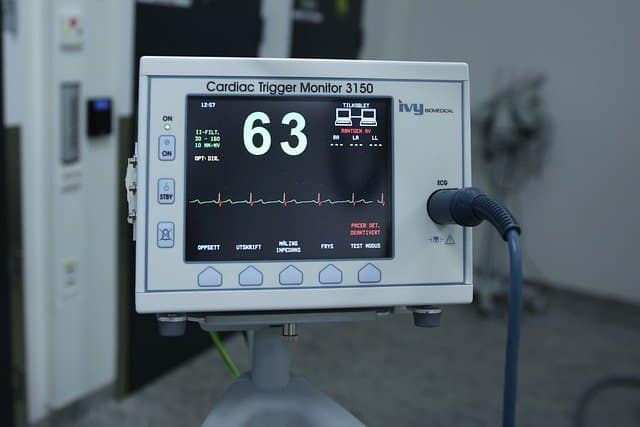BENEFITS OF PCBS IN MEDICAL DEVICES | LEADSINTEC
The advancement of technology is benefiting all industries, including the medical industry. Medical devices are progressively becoming smaller, yet more powerful, all the while meeting the demands of the profession. Innovations and advancements in technology are helping in the design and manufacturing of compact and complex medical devices.
As the medical industry deals with the lives of living beings, they must essentially involve precision and quality. This is dependent on the printed circuit boards or PCBs that are the basis of the foundation for these devices. That is why Rush PCB Inc focuses more attention on the quality of PCBs for medical devices.

PCBS FOR MEDICAL DEVICES
A circuit board or a PCB necessary for designing the medical device forms the backbone of the device. It must satisfy the design requirements for the instrumentation needs of the device. Designers must pay attention to precision and reliability when designing PCBs for medical devices. This is because medical devices are critical, and they save lives.
Functionally, a PCB integrates the electronic components that make up the medical device. The circuit board anchors the electronic components, making the device compact and safe for humans. Like any other electronic equipment, the PCB of a medical device may contain a wide range of components, including active and passive electronic components. Apart from providing mechanical support, the circuit board also provides the necessary electrical interconnections for the components the board is holding.
Electroplated copper conductors on the board provide electrical interconnections. If the board is multi-layered, these conductors are present in the inner layers also, passing through vias or holes for interconnecting with copper conductors on other layers. Most PCBs for medical devices are high-end and feature high performance.
PCB DESIGN CONSIDERATIONS FOR MEDICAL DEVICES
As medical devices save lives, they are delicate enough to emphasize precision and quality during design, fabrication, and assembly. For instance, design considerations must include:
SAFETY
This is an important factor, as medical devices must be safe for use. PCBs must be well-designed to prevent any shock to the patient. The designer must pay attention to the safety factor when designing the PCB.
ACCURACY, PRECISION & REPEATABILITY
As human lives depend on them, PCBs for medical devices must be accurate, precise, and repeatable in their functionality. The designer must pay attention to these factors also when designing the PCB.
RELIABILITY
The reliability of a medical device is very essential, especially when monitoring a patient. As the reliability of the device depends on the PCB inside it, the designer must make all efforts to maximize the reliability of the components and the PCB when designing.
LOW EMI/EMC
As medical devices connect to human beings, the devices must meet the specifications of low EMI/EMC very strictly. That means the PCBs inside the device must also meet these specifications. Designers must pay adequate attention to EMI/EMC when designing medical-grade PCBs.
SMT FOR PCBS IN MEDICAL DEVICES
There are two major types of components in use in the electronic industry—components with long leads or Through-Hole Technology (THT), and components without leads or Surface Mount Technology (SMT). Manufacturers prefer SMT components for medical devices, as these are smaller, less expensive, and more reliable compared to THT components.
The absence of leads in SMT components means the PCB does not require holes for mounting them. This improves the reliability of the board. Also, the assembly process for SMT components provides rigid anchoring and soldering, which also improves the performance and reliability of the device even facing vibrations and constant motion.
As SMT components are far smaller than their THT counterparts, the component density can be much higher on the board. Therefore, the entire PCB size can be much smaller comparatively, resulting in a more compact size for the medical device.
At present, PCB manufacturers prefer SMT components for medical devices. Their smaller size, better performance, lower cost, and ease of assembly, make them highly popular. Moreover, manufacturers can use automated methods of assembly, which removes any manual involvement throughout the manufacturing process, thereby improving quality and reliability.
PCB MANUFACTURERS FOR MEDICAL DEVICES
Manufacturers must meet specific requirements for PCBs to be used in medical devices. PCB design for medical devices is a complex activity, as failure in medical devices can cause greater harm—a patient can die as a result. PCB manufacturers for medical devices must adhere to international standards and regulations such as those stipulated by FDA, IPC, and ISO. Typically, they classify devices as Class 1, Class 2, and Class 3.
Medical devices of Class 1 are low-risk. They include IV stands, adhesive bandages, bedpans, etc., and are subject to the lowest level of regulatory controls.
Medical devices of Class 2 are associated with a risk level higher than that for Class 1, but lower than that for Class 3. These include syringes, blood pressure cuffs, powered wheelchairs, blood transfusion devices, etc., and are subject to both general and special levels of regulatory control.
Medical devices of Class 3 are associated with the highest risk level for patients and users. These devices are typically life-supporting or life-sustaining products and are subject to the highest levels of regulatory control. Medical PCBs must meet Class 3 electronics standards.
CONCLUSION
Fabricating medical PCBs is a crucial process. The criticality of medical devices makes them so important. Moreover, as these devices are lifesaving, there is an additional need for serious attention during design and manufacturing. Rush PCB Inc emphasizes high-quality control in fabricating PCBs for medical equipment.








